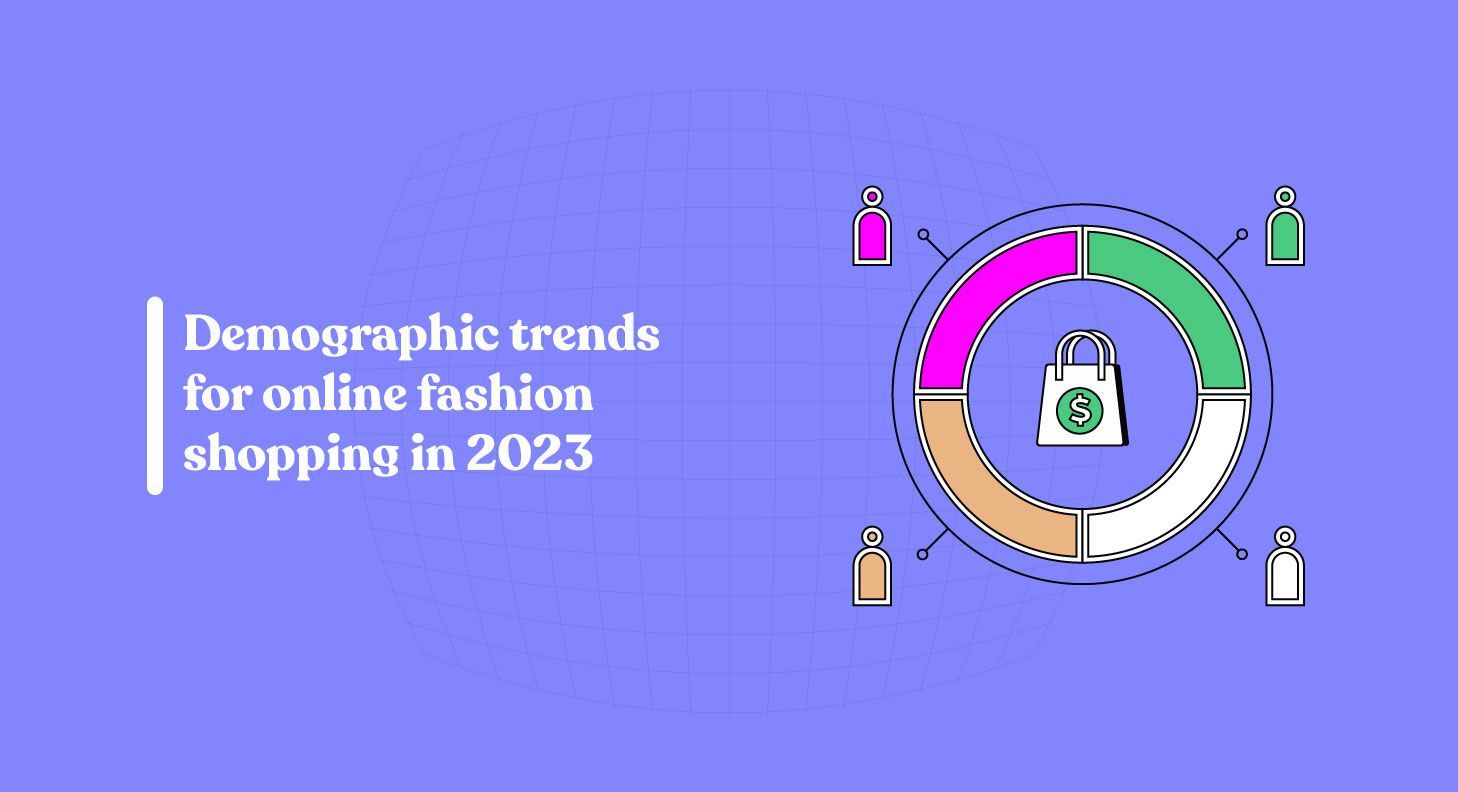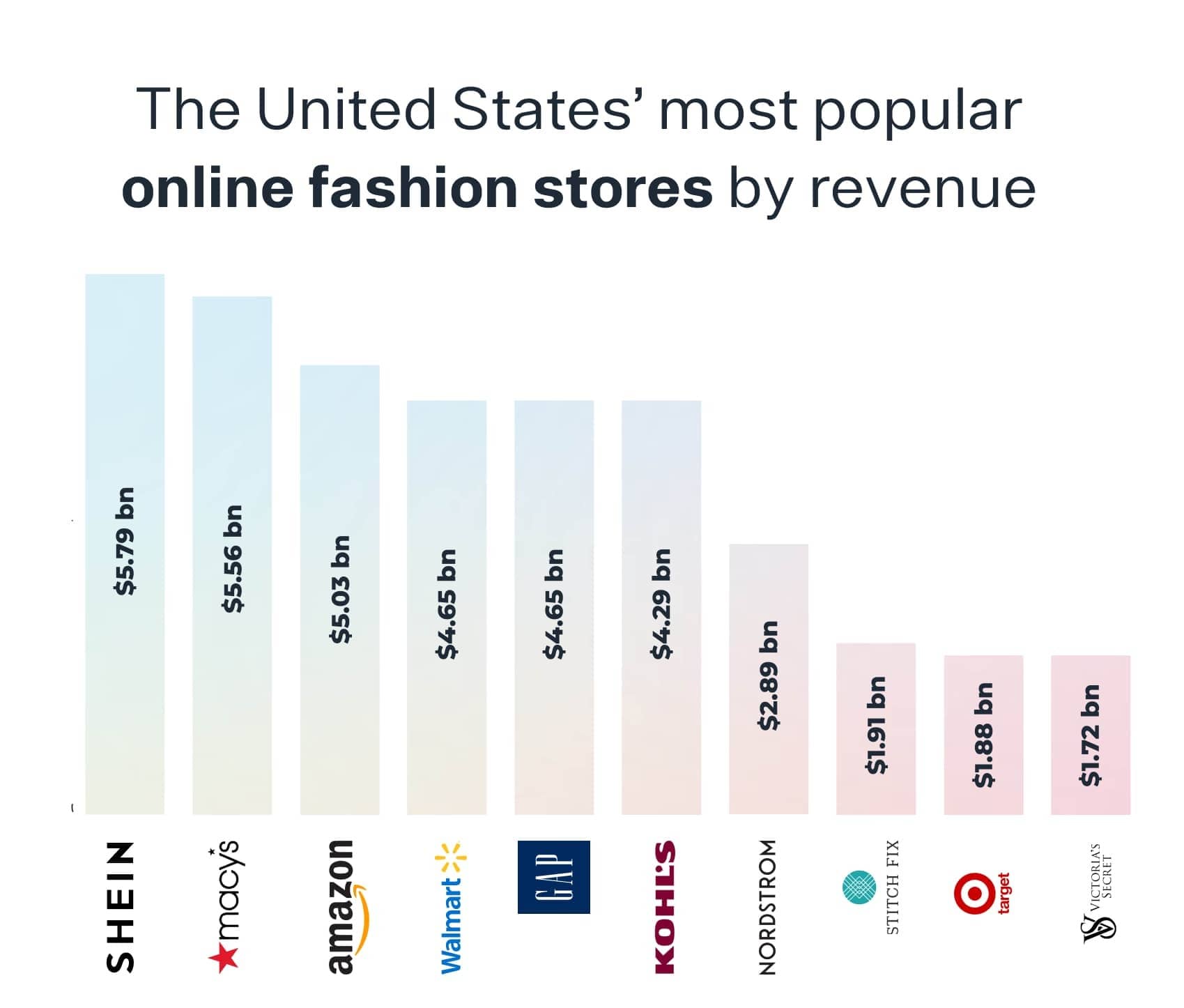Demographic Trends For Online Fashion Shopping In 2023

Understanding demographics in fashion e-commerce is important as it empowers retailers with invaluable insights to fine tune their strategy and examine the impact of these numbers on their businesses.
Here are some stats to consider from the 2023 ecommerce year:
Over 2.14 billion people currently shop online, a remarkable growth from just a few years ago. With a current global population of 7.9 billion people, this indicates that 27% of all individuals are digital shoppers, with China, the United States, Japan, the United Kingdom, France, and Germany spending the most on online shopping. More than half of worldwide e-commerce spending is spent in these countries.
Undoubtedly, the fashion business has influenced people's lives all around the world, and with retail e-commerce sales reaching trillions of U.S. dollars worldwide, it is no surprise that the fashion e-commerce market continues to grow each year. The value of the global fashion e-commerce market is expected to exceed 820 billion dollars in 2023 and could reach over 1.2 trillion dollars by 2027. Among the main categories of fashion, clothing makes up the majority of what customers buy online, but accessories and footwear still account for significant amounts of the online fashion market’s revenue worldwide.
North America and Asia together comprise the largest e-commerce markets for fashion. By 2027, the fashion e-commerce market in Asia is expected to generate over 680 billion US dollars, about twice as much as North America. Twenty-one percent of global fashion retail sales are made online, almost thirty percent of fashion retail purchases in other regions, like Europe, Oceania, or the americas overall, come from online sources while in Africa, offline sales of fashion account for the majority of sales; e-commerce contributes only 6.5%.
According to Statista, the world’s 10 biggest ecommerce businesses account for more than 60% of the revenue generated by online apparel sales.

Millennial consumers made up the group in the UK that made the most online purchases of apparel and footwear. 69 percent of millennials, defined as those between the ages of 27 and 42, stated that in the second quarter of 2023, they primarily bought clothing and shoes online.
Next in line were Gen Z consumers, of whom 47% primarily purchased clothing online. The most popular impulsive purchases made online by women globally are clothes and shoes. The bulk of fashion e-commerce shoppers are women, and as of 2022, they are most likely to be in the 26–35 age bracket. Ultimately, there is no denying the importance of fashion in the global e-commerce space the future of the fashion e-commerce industry is set to thrive as different types of fashion continue to become more accessible online.
According to Bain & Company, 65% of fashion consumers across all demographics care about the environment. However, identifying sustainable options poses a major challenge, with a third of the older demographic of shoppers stating that they struggle to find sustainability information for brands and products. This presents a huge opportunity for retailers who are transparent about their production practices and eco-friendly initiatives.
Retailers may create specialised marketing campaigns and products by analysing demographic data, which includes age, gender, income, geography, and lifestyle preferences. This allows them to target their customers with accuracy. Localised plans are guided by these findings, which make it easier to modify product assortments and marketing tactics to accommodate regional tastes.
Also, demographic information supports tailored consumer experiences, helps with inventory control, pinpoints unexplored regions for growth, and shapes brand positioning and messaging, all of which help to establish stronger connections and sustained relevance in the rapidly changing fashion industry.
Summary
- Over 2.14 billion people shop online, constituting 27% of the world's population, with top spending countries being China, the US, Japan, UK, France, and Germany.
- The global fashion e-commerce market, expected to surpass $820 billion in 2023, could reach over $1.2 trillion by 2027.
- Clothing dominates online fashion sales, but accessories and footwear contribute significantly to the market's revenue worldwide.
- North America and Asia comprise the largest fashion e-commerce markets, with Asia projected to generate over $680 billion by 2027, twice that of North America.
- Approximately 21% of global fashion retail sales occur online, with Europe, Oceania, and the Americas seeing nearly 30% of fashion purchases from online sources, while in Africa, e-commerce comprises 6.5%.
- Millennial consumers in the UK (aged 27-42) primarily buy clothing and shoes online and constitute the leading category of online shoppers, followed by Gen Z consumers (aged 18-26).

